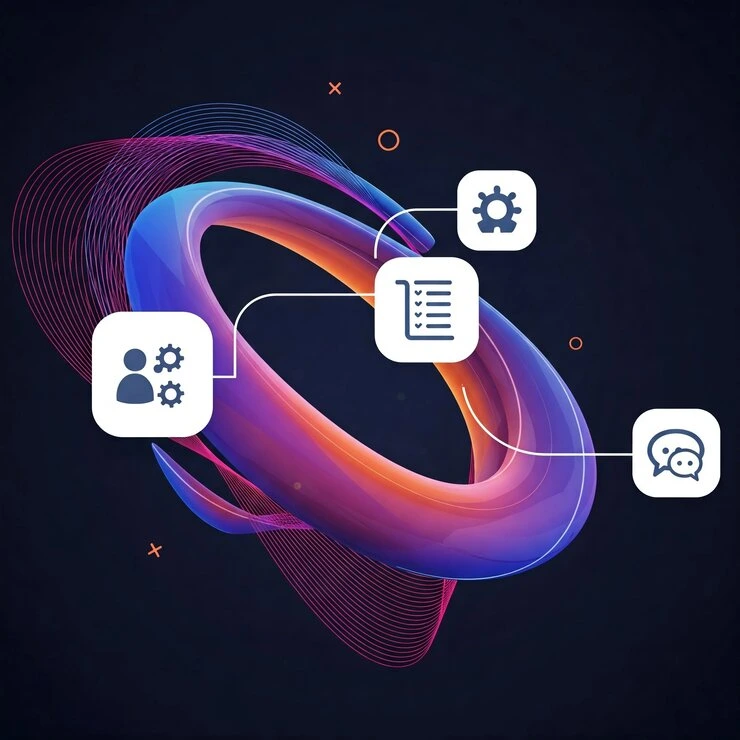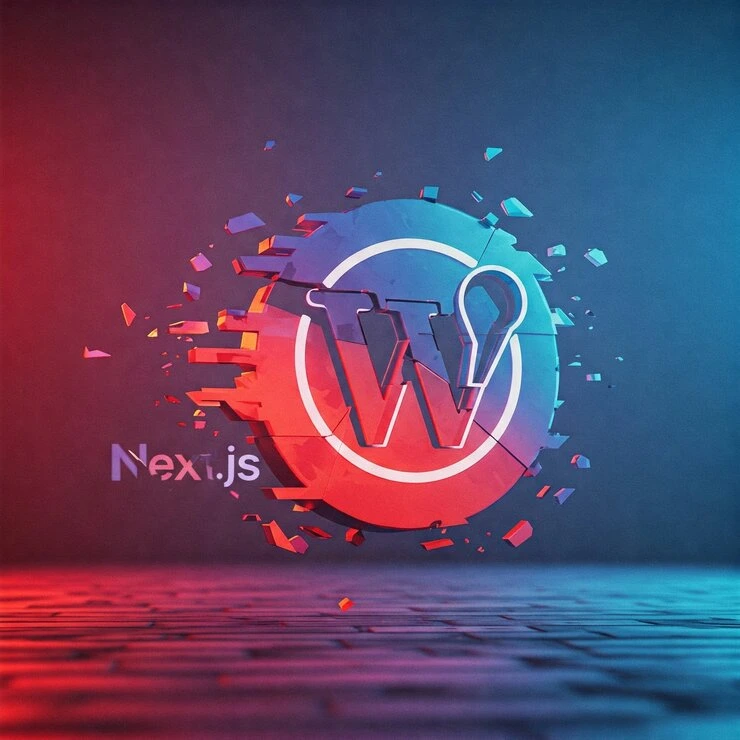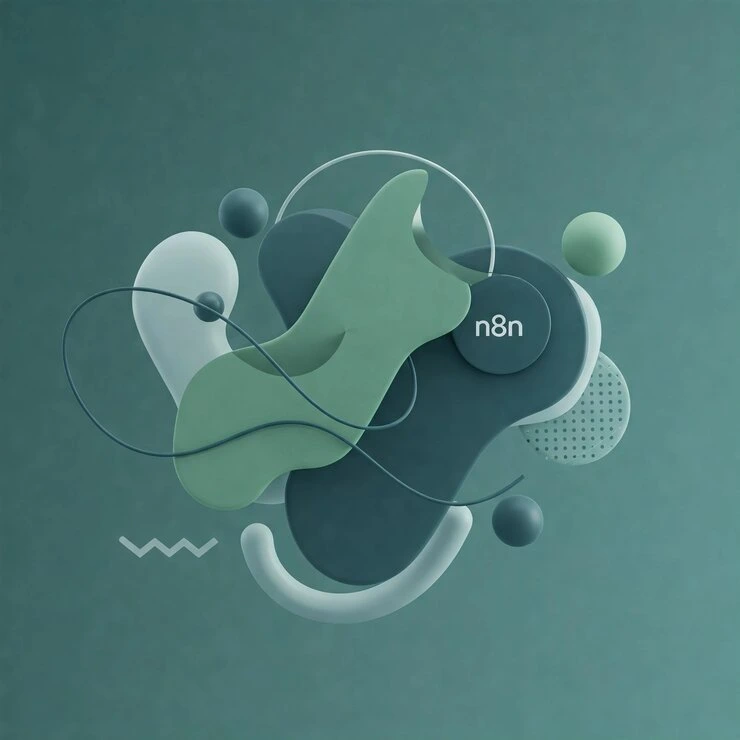AI agent frameworks are platforms designed to simplify the creation, deployment, and coordination of autonomous agents powered by large language models and other AI tools. These frameworks provide essential building blocks for memory management, tool integration, orchestration logic, and external API interaction. By abstracting complexity, they allow teams to focus on the agent’s behavior and purpose rather than infrastructure and plumbing.
In 2025, choosing the right framework has become a strategic decision. The market now offers a wide range of tools – from enterprise-grade platforms to no-code builders – each optimized for specific use cases, security needs, and team capabilities. A poor platform choice can lead to delays, scalability issues, or technical limitations that prevent the agent from delivering real value.
Building functional AI agents also comes with its own challenges. Developers must manage prompt reliability, context tracking, integration depth, and sometimes unpredictable LLM behavior. As agents become more autonomous and responsible for critical decisions, ensuring control, explainability, and safety becomes just as important as performance and speed. A strong foundation begins with the right framework.
What Is an AI Agent Framework?
An AI agent framework is a specialized development environment designed to simplify the creation, coordination, and deployment of autonomous agents powered by large language models (LLMs) and other AI components. Unlike traditional machine learning libraries, these frameworks provide out-of-the-box support for workflows, memory, tool use, and multi-agent orchestration. They often include interfaces for integrating external APIs, managing context over time, and chaining operations across tools or agents.
Most AI agent frameworks work by abstracting the underlying complexity of prompt engineering, state management, and inter-agent communication. Developers define high-level goals or tasks, and the framework handles the execution logic – whether it’s through a single agent or a team of specialized agents collaborating in sequence or in parallel.
Integration with LLMs is a core feature. These platforms typically support models like OpenAI’s GPT, Anthropic’s Claude, and open-source alternatives such as Mistral or LLaMA. In addition, they offer connectors or SDKs to plug into external services – from databases and web browsers to customer support systems and internal business tools – making agents truly useful in real-world workflows.
The key distinction between AI agent frameworks and generic libraries lies in structure and intent. A library provides reusable functions or classes; a framework defines an opinionated way to organize and run an entire agent lifecycle. In other words, frameworks are not just toolboxes – they are architectural foundations tailored for building autonomous, context-aware systems.
Key Criteria for Choosing an AI Agent Framework
Selecting the right AI agent framework requires a clear understanding of the project’s scope, technical context, and business priorities. Below are the main factors to consider when evaluating platforms for building AI agents.
- Project scale: Some frameworks are optimized for single-agent deployments, ideal for isolated tasks like summarization or simple automation. Others support multi-agent architectures where specialized agents collaborate to handle complex workflows. Multi-agent support becomes essential when tasks involve reasoning, delegation, or interdependent subtasks.
- Technical expertise: Teams with strong engineering backgrounds may prefer frameworks that offer full code-level control, such as LangChain or AutoGen. In contrast, no-code or low-code platforms like Lyzr or Apify are better suited for business users or rapid prototyping, minimizing the need for programming while enabling real results.
- Budget constraints: Open-source solutions provide cost-effective access to advanced capabilities but require in-house maintenance and integration. Commercial frameworks or cloud-native platforms may offer faster time to value with professional support, built-in infrastructure, and enterprise features – though at a premium.
- Hosting strategy: If data privacy or infrastructure control is a priority, self-hosted frameworks allow full deployment on private servers or secure environments. Cloud-hosted options simplify setup and scaling but may raise compliance or latency concerns in regulated industries.
- Security and compliance: For applications handling sensitive or regulated data, framework support for standards like GDPR, HIPAA, or SOC 2 becomes essential. Enterprise-grade platforms often provide built-in compliance layers, role-based access controls, and detailed audit logging.
By evaluating frameworks through these lenses, teams can better align platform capabilities with technical requirements and strategic goals.
Overview and Comparison of Popular AI Agent Frameworks (2025)
The AI agent ecosystem in 2025 is diverse, offering tools for developers, data teams, and business users. Below is a comparison of leading frameworks, highlighting their language support, target use cases, and ease of adoption:
| Framework | Languages | No-code / Low-code | Best Use Cases | GitHub |
| LlamaIndex | Python, JS | No | RAG pipelines, context-aware agents | Yes |
| AutoGen | Python, .NET | Yes (AutoGen Studio) | Complex automation, multi-agent systems | Yes |
| Crew AI | Python | No | MVPs, lightweight agent chains | Yes |
| LangChain | Python, JS | No | Custom agents, API integrations, orchestration | Yes |
| Lyzr | – | Yes | Business process automation, rapid deployment | No |
| Apify | JS, Python | Yes (Marketplace) | Monetizing agents, scraping, workflows | No |
| Agno | Python | Yes (UI included) | Multi-agent deployments, AWS infrastructure | No |
| Shakudo | – | Yes | Enterprise data orchestration, AI pipelines | No |
LlamaIndex
Initially developed for retrieval-augmented generation (RAG), LlamaIndex has evolved into a flexible platform for building context-aware agents. In 2025, it plays a key role in bridging LLMs with enterprise data – PDFs, spreadsheets, APIs, and vector stores – while maintaining contextual memory across steps. Its modular design and tight integration with LangChain make it ideal for building research assistants, internal copilots, and document-intensive workflows.
AutoGen
AutoGen – an enterprise-grade framework from Microsoft – is built for orchestrating multi-agent systems. It features AutoGen Studio, a visual editor for defining agent interactions, along with native support for browser automation, chat-based workflows, and .NET/Python environments. In 2025, it stands out as a powerful solution for building collaborative agents that mirror real-world team dynamics across secure enterprise infrastructures.
Crew AI
Crew AI is built for simplicity and speed. Its role-based agent architecture – where agents like “researcher”, “writer”, or “strategist” coordinate in a linear or parallel chain – makes it highly intuitive. As of 2025, Crew AI is widely adopted in startups and product teams for building prototypes, MVPs, and lean automation tools with minimal setup.
LangChain
LangChain remains a leader in open-source agentic development. It provides granular control over tools, memory, chains, and agent behavior – making it suitable for both single-agent and multi-agent deployments. In 2025, LangChain is used in RAG applications, chatbots, and AI workflows that require high flexibility, third-party API access, and long-term maintainability.
Lyzr
Lyzr is a no-code platform designed to help business teams build and deploy AI agents without writing code. With thousands of ready-made agents and deployment options for cloud and on-premise environments, it enables rapid digitization of internal processes. In 2025, Lyzr is used across industries for automating HR, customer support, data entry, and report generation – all through a visual interface and built-in analytics.
Apify
Apify combines agent development with monetization through its marketplace. It supports both Python and JavaScript, allowing developers to build agents for scraping, monitoring, and automation, and then publish them for commercial use. By 2025, Apify is a mature platform for developers looking to create revenue-generating agents, especially in the domains of e-commerce, data aggregation, and business intelligence.
Agno
Agno offers a modern platform for building and scaling multi-agent workflows. It comes with out-of-the-box UI for managing agents, prebuilt templates for common use cases, and one-click deployment to AWS. In 2025, it is used by teams building operational AI assistants that require observability, modular scaling, and secure infrastructure integration.
Shakudo
Shakudo provides an enterprise AI infrastructure that unifies data integration, model orchestration, and agent deployment. It supports low-code development, robust compliance features, and scaling for data-intensive environments. In 2025, Shakudo is chosen by large organizations needing end-to-end control over AI pipelines – from ingestion to automation – across highly regulated sectors.
Trends and Key Features of 2025
The AI agent landscape in 2025 is shaped by several technological and business-driven trends that significantly influence how frameworks are built, adopted, and monetized.
- Rise of no-code and low-code platforms: Tools like Lyzr, Apify, and Agno have lowered the barrier to entry by enabling non-technical users to create, deploy, and manage agents without writing code. This democratization allows marketing teams, HR departments, and operations units to automate tasks directly, reducing dependence on engineering resources.
- Growing adoption of multi-agent architectures: Frameworks such as AutoGen and Crew AI are popularizing the use of specialized agents that collaborate to complete complex objectives. In 2025, multi-agent coordination is becoming a standard approach for workflows that require reasoning, delegation, or role separation.
- Native integration with top-tier LLMs: Most frameworks now offer seamless compatibility with models from OpenAI, Anthropic, Mistral, and others. This standardization simplifies agent development and ensures access to the latest capabilities in reasoning, summarization, planning, and tool use.
- Agent monetization via marketplaces: Platforms like Apify are enabling developers to publish agents as reusable services, creating new revenue streams. In 2025, this model is gaining traction, particularly in niches like data scraping, task automation, lead generation, and analytics.
- Increasing focus on security and compliance: As agents handle more sensitive data, enterprise buyers demand features like audit logs, role-based access control, and compliance with GDPR, HIPAA, and SOC 2. Frameworks targeting corporate users are expected to provide built-in security infrastructure and deployment options that meet industry standards.
Together, these trends reflect a shift toward operationalizing AI agents at scale – moving beyond prototypes into real, secure, and profitable applications.
Business Use Cases for AI Agents
AI agents are rapidly becoming essential components of modern business operations, enabling automation, scalability, and intelligent decision-making across departments. Below are four practical areas where AI agents deliver tangible value in 2025:
- Customer support: AI agents are deployed to handle incoming queries, resolve tickets, and escalate issues when necessary. They integrate with CRMs, chat platforms, and knowledge bases to provide 24/7 assistance, reducing wait times and support costs. Multi-agent setups can split responsibilities between answering FAQs, processing requests, and collecting feedback.
- Web scraping and data analysis: Businesses use agents to collect, clean, and interpret data from public websites, internal documents, or APIs. These agents are particularly valuable in market research, competitive intelligence, and price tracking, automatically updating dashboards or triggering workflows based on new data.
- Sales and marketing: AI agents assist in lead qualification, personalized outreach, campaign optimization, and content generation. For example, an agent can analyze user behavior, segment audiences, and craft tailored messages for each customer group – all while integrating with marketing platforms like HubSpot or Salesforce.
- Internal assistants: Companies deploy internal-facing agents to support HR, finance, and operations. These assistants help employees book meetings, summarize reports, onboard new hires, or automate compliance checks. Their ability to work across tools like Slack, Google Workspace, and Notion makes them powerful productivity enhancers.
In each case, the flexibility of AI agents allows businesses to build solutions tailored to their workflows and scale them without growing headcount.
Recommendations for Choosing a Framework
Choosing the right AI agent framework begins with clearly defining the task your agent needs to perform. Whether it’s answering questions, automating internal workflows, or coordinating across multiple tools, the starting point should always be the business goal. From there, consider the complexity of the task, the team’s technical capacity, integration needs, and long-term scalability.
For non-technical users or fast experimentation, no-code platforms like Lyzr or Apify offer speed and ease of use. Developers building customized solutions can rely on LangChain for flexibility or AutoGen for enterprise-grade coordination. Crew AI is well-suited for rapid MVP development, while Agno and Shakudo provide robust options for teams with infrastructure, monitoring, and compliance needs.
Conclusion
There is no universal framework that fits every case. The right platform depends on your specific objectives, team skillset, and operational requirements. A small startup automating lead generation and a corporate team deploying internal assistants will naturally choose different tools.
To move forward, study open-source projects, compare available features, and explore example workflows. Most importantly, start with a well-defined problem and select the framework that best matches your priorities. A clear use case leads to better architecture, faster development, and higher long-term impact.




